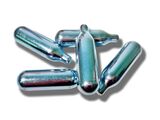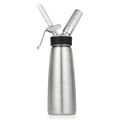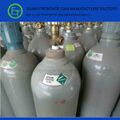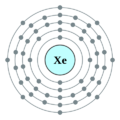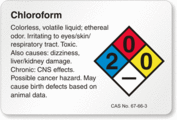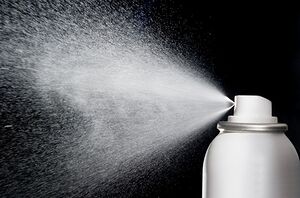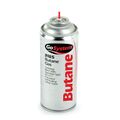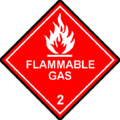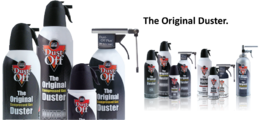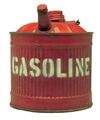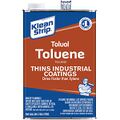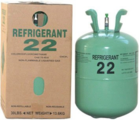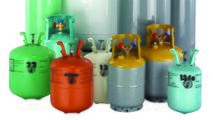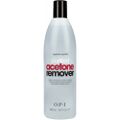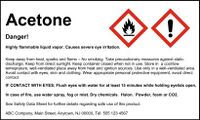Inhalants

It is never ever safe to ingest inhalants (except alcohols) or directly inhale compressed gases! Short-term moderate inhalation of properly administered medical inhalants (e.g. alkyl nitrites (poppers), or nitrous oxide (when supplemented with vitamin B12 after use to prevent deficiency) can be safe. However, inhalants that are not designed for medical use (e.g. medical gasoline) are considered toxic inhalants, and even a single session of using them can result in sudden death,[1][2] and can cause chronic solvent-induced encephalopathy (CSE), and volatile inhalant withdrawal with frequent use.
Unlike other substances, there is no such thing as safe recreational use of volatile solvents without medical use (street inhalants)—their psychoactive effects are inseparable from nerve and organ damage. Additionally, aerosol spray dispensers can cause aerosol burn and hypoxia (lack of oxygen). It is strongly discouraged to take any amount of these substances, even for minor experimentation purposes. Avoid them at all costs. Please see this section for more details.

Inhalants refer to a broad range of household or industrial chemicals whose volatile vapors or gases are concentrated and inhaled into the lungs via the nose or mouth to produce a state of acute intoxication. The effects of inhalants range from central nervous system depression and intense euphoria to vivid hallucinogenic experiences such as internal and external hallucinations. However, these intoxicating and debilitating effects vary widely depending on the substance and the dose used.
Inhalants do not include substances that are breathed in after they have been heated through vaporization or burned. For example, amyl nitrite (poppers), nitrous oxide and toluene are considered to be inhalants because they are volatile at room temperature and need no other heat source to transform from liquid to gaseous state. Tobacco, cannabis, crack-cocaine, or any other psychoactive substance that requires an external heat source is not considered to be a member of the inhalant category of substances, even though once heated the resulting fumes are inhaled into the lungs.
Overview
| Safety | Category | Sub category | Psychoactive effect | Examples[3] | Example image |
|---|---|---|---|---|---|
| Medical inhalants | Nitrites | Dissociative | Alkyl nitrites (poppers such as amyl nitrite) | ||
| NOx | Dissociative | Nitrous oxide (found in whipped cream canisters) | |||
| Medical (historical) | |||||
| Ethers | Depressant | Diethyl ether (liquid): Fuel, aerosol propellant, refrigerant, “freeze” sprays, fuel | |||
| Hydrocarbons | Chloroalkanes | Depressant | |||
| Carbon tetrachloride (liquid): Cleaning solutions, aerosol propellants | |||||
| Chloroethane (liquid): Topical anesthetic | |||||
| Chloroform (liquid): Cleanser for plastic compounds, adhesive, spot remover | |||||
| 1,1,1-Trichloroethane (liquid): Typewriter correction fluid | |||||
| Toxic | |||||
| Ethers | Depressant | Dimethyl ether (liquid): See "ethyl ether" for sources | |||
| Hydrocarbons | |||||
| Chloroalkanes | Depressant | ||||
| Methylene chloride (liquid): Paint thinners, varnish removers, degreasing agent | |||||
| Tetrachloroethylene (liquid): Dry cleaning agents, degreaser | |||||
| Trichloroethylene (liquid): Dry cleaning agent, spot remover, degreaser | |||||
| Aliphatic hydrocarbons | Dissociative | ||||
| Butane, propane, methane (gas): Lighter fluid, bottled fuel, aerosol propellants (hair spray, spray paint, deodorants, room fresheners, cooking oil sprays) | |||||
| n-Hexane (liquid): Adhesive, gasoline, industrial solvents, rubber cement | |||||
| Isooctane (liquid): Automotive fuel | |||||
| Kerosene (liquid): Lighter fluid | |||||
| Naphtha (liquid): Shoe polish, adhesive | |||||
| Turpentine (liquid): Paint thinner, solvent | |||||
| Aromatic hydrocarbons | Dissociative | Benzene (liquid): Gasoline, rubber cement | |||
| Toluene (liquid): Adhesives, paint thinner, spray paint, rubber cement, nail polish remover | |||||
| Xylene (liquid) Paint thinner, adhesive, degreaser | |||||
| Fluorocarbons | Chlorofluorocarbons (gas): (freons: difluoroethane, dichlorofluoromethane, tetrafluoroethane, bromochlorodifluoromethane) Refrigerants, various aerosol propellants (hair spray, spray paint, computer spray or duster, deodorants, room fresheners, fire extinguisher) | ||||
| Ketones | Depressant | Acetone (used in nail polish remover) |
Medical inhalants
Antidote to cyanide poisoning
Alkyl nitrites (poppers)
Alkyl nitrites (also known as poppers) are a class of volatile liquid substances whose fumes are inhaled for recreational purposes, particularly in preparation for sexual activities.[4] They are known for producing intense but short-lived muscle relaxing effects that start after about 15 seconds and last for up to 3 minutes.The substance is often sold under the name 'Rush'.
General anesthetics
For a full list of medical inhalational anesthetic agents, see: List of medical inhalants#Inhalational anesthetic agents
Nitrous oxide
While not a volatile organic chemical, nitrous is often inhaled or huffed and is therefore technically an inhalant. It is also worth noting that this is one of the very few inhalants which are not inherently dangerous to use assuming that appropriate precautions are taken.
Nitrous oxide, commonly known as laughing gas, nitrous, nitro, NOS or hippy crack,[5] is an inorganic molecule and chemical compound with the formula N2O. It is an oxide of nitrogen. At room temperature, it is a colorless and non-flammable gas with a slightly sweet odor and taste. It is used in surgery and dentistry for its anesthetic and analgesic effects.
It is also known as "laughing gas" due to the euphoric effects of inhaling it, a property that has led to its recreational use as an atypical dissociative anesthetic. The duration of these effects is approximately 2 - 5 minutes in length. It is also used as an oxidizer in rocketry and in motor racing to increase the power output of engines. At elevated temperatures, nitrous oxide is a powerful oxidizer similar to molecular oxygen.
Above are nitrous oxide canisters. These are available for purchase on amazon and many other websites.
Nitrous canisters are used with whip cream dispensers as an easy and convenient route of administration.
Food grade cream chargers compared to medical nitrous oxide
- Medical grade contains 50% nitrous oxide, and 50% oxygen.
- The gas from "cream chargers" contains food grade, not medical grade nitrous oxide. Thus, they can contain a range of impurities, such as industrial grease left over from manufacturing, and tiny particles of steel from the pierced metal. Users can filter them through a piece of cotton, cloth, or clothing to reduce the amount of impurities inhaled.[6][7] Regular cleaning of nitrous dispensing devices can also reduce the harm posed by impurities.
Xenon
Xenon is an elemental gas that is reported to produce psychoactive effects upon inhalation, whose effects are similar to nitrous oxide. These include dissociation, anesthesia and euphoria. Recreational use of Xenon is rare due to its high cost and the difficulty of obtaining it[8]. Xenon is neuroprotective against oxygen deprivation and has been used to prevent brain damage in extremely premature babies. [9]
Anecdotal reports of xenon experience can be found here:
Historical general anesthetics
Obscure compounds:
- 1,1,1-Trichloroethane (Wikipedia)
- Carbon tetrachloride (Wikipedia)
Chloroethane
It was commonly used to induce general anaesthesia before continuing with di-ethyl ether, which had a much slower up-take.
Albeit not used an inhalant in modern times it is still worth to note that: In Brazil, chloroethane is a major component of a traditional (though illegal) drug taken during Carnaval, known locally as "lança-perfume"[10] (lit. perfume launcher or sprayer).
Chloroform
Chloroform, or trichloromethane, is an organic compound with formula CHCl3. It is a colorless, strong-smelling, dense liquid. It is a volatile solvent that was used as a medical anesthetic during the late 19th and early 20th centuries. It is one of the four chloromethanes and a trihalomethane. It is a powerful anesthetic, euphoriant, anxiolytic and sedative when inhaled or ingested.[11]
The anesthetic qualities of chloroform were first described in 1842 in a thesis by Robert Mortimer Glover, which won the Gold Medal of the Harveian Society for that year. Glover also undertook practical experiments on dogs to prove his theories. Glover further refined his theories and presented them in the thesis for his doctorate at the University of Edinburgh in the summer of 1847. The Scottish obstetrician James Young Simpson was one of the persons required to read the thesis, but later claimed to have never read the thesis and to have come to his conclusions independently.
The use of chloroform during surgery expanded rapidly thereafter in Europe. In the 1850s, chloroform was used by the physician John Snow during the birth of Queen Victoria's last two children. In the United States, chloroform began to replace ether as an anesthetic at the beginning of the 20th century; however, it was quickly abandoned in favor of ether upon discovery of its toxicity, especially its tendency to cause fatal cardiac arrhythmia analogous to what is now termed "sudden sniffer's death". Some people used chloroform as a recreational drug or to attempt suicide.[12]
Use of chloroform as an incapacitating agent has become widely recognized, bordering on clichéd, due to the popularity of crime fiction authors having criminals use chloroform-soaked rags to render victims unconscious. However, it is nearly impossible to incapacitate someone using chloroform in this manner.[13] It takes at least five minutes of inhaling an item soaked in chloroform to render a person unconscious. Most criminal cases involving chloroform also involve another drug being co-administered, such as alcohol or diazepam, or the victim being found to have been complicit in its administration. After a person has lost consciousness due to chloroform inhalation, a continuous volume must be administered and the chin must be supported to keep the tongue from obstructing the airway, a difficult procedure typically requiring the skills of an anesthesiologist.
Anecdotal reports of chloroform experience can be found here:
Ether
See also: Ether addiction (Wikipedia)
Diethyl ether (commonly known as ether) is a volatile liquid whose vapors are inhaled to produce effects such as nausea, dizziness, and auditory hallucinations[14]. The CNS depressant effects lead it to also cause unconsciousness, drowsiness, and sedation. Other psychoactive effects that are documented in experience reports include internal hallucinations, loss of motor control, and other hallucinatory states.
Ether is highly flammable and should be treated with care. It can cause irritation to the upper respiratory tract when inhaled. Irritation to the eyes and skin may also occur along with coughing and headaches.
Ether was commonly used in the 19th century for anesthesia. It was also used as a psychoactive drug for its intoxicant effects. It can be drunk in its liquid form but, due to the volatility of the substance, this practice is not advised as it can cause severe damage to internal organs. Pure ether is volatile at standard temperature and pressures, and the vapors of ether can be inhaled to experience its psychoactive effects. Ether can also be absorbed through the skin.
Diethyl ether does not depress the myocardium but rather it stimulates the sympathetic nervous system leading to hypertension and tachycardia. It is safely used in patients with shock as it preserves the baroreceptor reflex.[15] Diethyl ether could also be mixed with other anesthetic agents such as chloroform to make C.E. mixture, or chloroform and alcohol to make A.C.E. mixture. In the 21st century, ether is rarely used. The use of flammable ether was displaced by nonflammable fluorinated hydrocarbon anesthetics. Halothane was the first such anesthetic developed and other currently used inhaled anesthetics, such as isoflurane, desflurane, and sevoflurane, are halogenated ethers.[16]
Anecdotal reports of ether experience can be found here:
Non-medical inhalants
Ethanol (the alcohol which is normally drunk) is sometimes inhaled, but this cannot be done at room temperature.
Toxic inhalants

Toxic inhalants can cause sudden death and should never be inhaled!
Most users tend to be "... adolescents (between the ages of 12 and 17)."[18]
Types
Hydrocarbons
The most common ingredients found in aerosols is some fluorocarbon or hydrocarbon molecule acting as a propellant. Gases from aerosol spray dispenser can cause sudden death upon inhalation and is not advisable from a harm reduction perspective.
Aerosols are found in common household items such as air freshener, hair spray, and spray paint. The variety of the specific chemicals used in inhalation vary widely based on the product being used.
Most gasses are compressed into canisters and will absorb heat from the environment upon expansion into the atmosphere from the can. This temperature change can cause serious bodily harm if one does not consider the temperature change that the gas can go through upon inhalation. In addition to the dangers associated with inhaling uncompressed gas, there are dangers of asphyxiation and death because the psychoactive gas that is heavier than air will accumulate in the lungs and prevent oxygen absorption.
Gases
Butane
Use of this inhalant can cause sudden death upon inhalation and is not advisable from a harm reduction perspective.
This chemical is often found in a compressed form in a can and can be inhaled directly. Using butane as a drug is dangerous due to possible oxygen deprivation. The direct inhalation of the gas can also cause drowsiness, narcosis, asphyxia, and cardiac arrhythmia among other CNS depressant effects. Butane is the most commonly abused volatile organic solvent in the United Kingdom and caused 52% of solvent-related deaths in 2000.
When butane is sprayed directly into the throat, the jet of fluid can cool rapidly to the dangerous temperature of −20 °C by adiabatic expansion, causing prolonged laryngospasm and other bodily harm. The ingestion of liquid butane or direct inhalation of butane can cause frostbite like effects that pose a serious risk of personal injury [19].
Butane is also dangerous to use in an unventilated area. It is a highly flammable gas and if too much butane accumulates in the atmosphere a physical or electrical spark can cause an explosion. If pressure or heat is applied to cans containing butane, they will explode and pose a risk for bodily harm.
An anecdotal report of a butane experience can be found here:
Propane
Propane is a hydrocarbon. It is commonly found in hair spray, and portable propane tanks used for fuel.
- Gas duster
Gas dusters generally contain the halocarbons difluoroethane (DFE) or tetrafluoroethane (TFE). Some gas dusters contain trifluoroethane, but these are very rare. TFE has been used as a human anesthetic and has a similar structure to Halothane. DFE has been linked to multiple cases of sudden cardiac death after inhalation. There are no reported deaths from TFE, however, it can cause arrythmias and possibly sudden death. Beta-blockers prevent TFE-induced arrythmias. It is not known whether beta blockers prevent DFE-induced arrythmias and death.
Difluoroethane molecules can be found in commercial electronics dusters.[20]
An anecdotal report of electronics duster experiences can be found here:
Liquid
Gasoline/petrol

Gasoline is never safe to inhale. Medical gasoline is designed for topical use, for example to make it easy to remove adhesive residues from plaster and band-aid. It is not safe to inhale medical gasoline, just because the purification from lead eliminates lead toxicity. Medical gasoline still consists of aliphatic hydrocarbons and can cause sudden death though hydrocarbon toxicity.
Use of this inhalant can cause sudden death upon inhalation and is not advisable from a harm reduction perspective.
This substance is highly flammable and should be treated with care.
Petrol, or gasoline, is a toxic liquid that is volatile at room temperatures. This makes it easy to inhale the vapors from sniffing a container full of liquid gasoline and achieving effects ranging from hallucinations to numbness and cognitive euphoria. Gasoline that is inhaled from a gas can, or car can contain other carcinogenic and psychoactive chemicals, such as toluene, benzene, and xylene[21]. The mixed chemical contents of gasoline make it inherently unsafe to inhale over sustained periods of time.
Gasoline as a liquid mixture of hydrocarbons contains many components, some of which are psychoactive or toxic to the body. Gasoline may contain ethanol, toluene, benzene, and many other volatile chemicals that will emit vapors that will be inhaled when abused. In areas where leaded gas is not banned, lead encephalopathy and brain degeneration may be caused by gasoline sniffing [22]. Benzene is also a known constituent of gasoline vapors and is known to contribute to leukemia and other blood disorders[23].
Anecdotal reports of gasoline inhalation experiences can be found here:
- "A Second World" A Gasoline Trip Report
- "Karmic Retribution: An Experience with Inhalants (Gasoline)"
- "Addicted to Gasoline"
Toluene
Use of this inhalant can cause sudden death upon inhalation and is not advisable from a harm reduction perspective.
Toluene is a chemical solvent commonly used in industry. It is a liquid solvent that is volatile at room temperatures, making the vapors easy to inhale by sniffing a product containing toluene. It has a sweet smell and is colorless. Its vapors can be inhaled from soaking a rag in toluene containing liquids or sniffing the vapors directly from glue emitting toluene vapors. It can found in gasoline, acrylic paints, varnishes, lacquers, paint thinners, adhesives, glues, rubber cement, airplane glue, and shoe polish, among various other common everyday household items. Toluene can be absorbed through the skin in addition to being inhaled.[24]
Exposure to the high concentrations used in toluene abuse can cause many acute physical and cognitive effects ranging from nausea, dizziness, drowsiness, general CNS depression, sedation, motor control loss, and hallucinatory states[25]. The hallucinatory states induced by toluene can be assessed by experience reports submitted by users.
Long term damage to the central nervous system has been well-documented among long-term inhalant users of toluene.[26] The long-term effects of chronic toluene exposure include changes in sleeping patterns, liver failure, kidney failure, heart failure, persistent neurological damage, and death[27].
Toluene is known to cause congenital disabilities and the birth rate of children when used by pregnant women [28]. It is a possible carcinogen, and its nature as a carcinogen is unknown is due to insufficient data from the EPA [29]. Caution should be used if choosing to inhale this chemical in recreational amounts (i.e. over a single experience and over long periods of time).
An anecdotal report of toluene experiences via glue sniffing can be found here:
Liquid/gas mixtures
Freon
Freon is a trademark name for fluorinated hydrocarbons. Freon is an odorless gas commonly used as refrigerants and aerosol propellants, it's also found in air conditioning units. They are stable, nonflammable, low toxicity gases or liquids.
Use of this inhalant can cause sudden death upon inhalation and is not advisable from a harm reduction perspective.
This class of chemical refrigerants can be abused as a psychoactive substance. Pure Freon is a brand manufactured by DuPont, the most current brand of Freon being phased out of production is R-22 and contains primarily chlorodifluoromethane. There are many different variants of the brand name Freon and the chemical composition varies along with the "R-x" name given the refrigerant. Some people huff Freon directly from AC units and this is a dangerous practice as one does not know the exact type of Freon found in an AC unit, much less the potential chemical contaminants found in the gas from the AC unit.
An anecdotal report of Freon experiences can be found here:
A NIOSH (National Institute for Occupational Safety and Health) International Chemical Safety Card for R-22 as one example of these chemical refrigerants can be found here:
Ketones
A solvent is something that emits vapors that can be inhaled for their psychoactive effects. The liquid form of the solvent itself is not consumed. Some common forms of psychoactive solvents are toluene containing paint thinners and lacquers, spray paint, and blends of hydrocarbons such as gasoline or petrol.
Liquid
Acetone
Use of this inhalant can cause sudden death upon inhalation and is not advisable from a harm reduction perspective.
Acetone is a liquid solvent that is volatile at room temperatures. The vapors of acetone are flammable and so extra caution should be taken when handling and using acetone.
Its vapors can be sniffed and are known to have damaging physical effects such as respiratory tract irritation[30]. The acute effects of acetone exposure through inhalation and dermal exposure include CNS depression, dizziness, sedation, motor control loss, and "narcosis" which can be interpreted as drunkenness or otherwise intoxicant effects[31]. This evidence suggests that acetone acts as a psychoactive chemical in high concentrations.
Toxicity and harm potential for toxic inhalants
There is no safe way to consume aerosol sprays, or solvents, as sudden death upon inhalation is always a present risk.
Some inhalant users become injured due to the harmful effects of the inhalants themselves, or due to other chemical by-products that are unintentionally inhaled in a contaminated solvent.
The specific toxicities of each inhalant are given below, but inhalants as a class of substances are among the most harmful and dangerous to use due to the possibility of long-term health damage, and sudden death.
Certain inhalants, such as hydrocarbons (e.g. butane, propane), toluene cause renal, liver, lung, and bone marrow damage.[32]
Pneumonia, cardiac failure or arrest, or aspiration of vomit are other common causes of death after inhalant use. Brain damage is typically seen with the chronic long-term use of solvents, while short-term exposure carries a lower chance of permanent brain damage[26].
Lethal dosage
The lethal doses of inhalants vary depending on the substance used. All nonmedical inhalants are inherently dangerous to use and may cause sudden death.
Sudden sniffing death syndrome[33], also known as SSDS, is when inhalants indirectly cause sudden death by cardiac arrest, in a syndrome known as "sudden sniffing death." In some cases, the anesthetic gasses present in the inhalants themselves appear to sensitize the user to adrenaline treatment by emergency medical services and, in this state of intoxication, a sudden surge of adrenaline (possibly from a frightening hallucination or run-in with other persons), may cause fatal cardiac arrhythmia.
Experience reports
There are currently no anecdotal reports which describe the effects of inhalants within our experience index. Additional experience reports can be found here:
Methods of inhalation
Gases
For nitrous oxide see also: Impurity filtration from decompressed cream chargers
Inhalation from balloons
To avoid frostbite, the gas is decompressed into a balloon, which is then inhaled.
Direct inhalation of decompressed gas (dangerous)
Other forms of inhalants are gases that are inhaled directly from a pressurized container (e.g. computer duster, butane gas, nitrous oxide or xenon gas). These gases can be inhaled directly from a compressed chemical canister (as is the case with butane gas and computer duster), which may cause physical harm due to the freezing of skin tissue as the gas expands in the lungs.
It is imperative that one ensure an adequate flow of oxygen to the brain while using inhalants to minimize the chances of permanent brain damage.
Aerosol products
Filtering
Air fresheners are inhaled in a similar matter to hairspray inhalation. A rag is placed over the mouth, which the air freshener is discharged into and subsequently inhaled.
Solvents
Solvents are inhaled at room temperature through the inhalation of the gases emitted from a solvent, as seen in the case of recreational gasoline or acetone use. One must inhale the vapors from the solvent or gas itself via the nose or mouth. Inhalants that are solvents are commonly used by saturating the cloth with spray paint or other liquid materials, then placing this soaked rag over the nose and mouth, which result in the inhalation of the vapors from the rag. This subsequent inhalation often produces feelings of euphoria, especially when huffing generic "glue" or "paint thinner" that may contain high volumes of toluene and other hydrocarbons.
Huffing
Some common for inhalation include "huffing"[34] which is the process of filling a bag up with a solvent and inhaling the resulting fumes and "bagging"[35] which is the process of spraying a solvent into a plastic bag of some sort and inhaling the vapors that emit from it. In the process of inhalation by bagging, the exhaled air is re-breathed by the user, and the resulting lack of oxygen and elevated breathing rates may add to the intoxicating and harmful effects of the solvent.
Toxicity and harm potential

This section covers risks general risks for both medical and nonmedical inhalants. For specific risks with nonmedical inhalants, see Toxicity and harm potential for toxic inhalants
It is strongly recommended that one use harm reduction practices when using this class of substances.
Both medical and nonmedical inhalants should be avoided by:
- Inhaling large quantities continuously with a strap-on mask connected to a gas canister. Because it will eventually cause oxygen deprivation. In some cases, users have died from a lack of oxygen, also known as hypoxia[citation needed].
- Inhaling compressed gas directly from a container. Because it can cause aerosol burn and frostbite.
Addiction potential
The chronic use of many inhalants can be considered moderately addictive with a high potential for abuse and is capable of causing psychological dependence among certain users. When addiction has developed, cravings and withdrawal effects may occur if a person suddenly stops their usage.
Oxygen deprivation
The direct inhalation of any gas or solvent that is capable of displacing oxygen in the lungs (especially gases heavier than oxygen itself) carries the risk of hypoxia (oxygen deprivation) as a result of the very mechanism by which breathing is triggered.
Since reflexive breathing is prompted by elevated carbon dioxide levels rather than diminished blood oxygen levels, breathing a concentrated and inert solvent or gas (ex: tetrafluoromethane or nitrous oxide) that removes carbon dioxide from the blood without replacing it with oxygen will produce no outward signs of suffocation even when the brain is experiencing hypoxia.
Once full symptoms of hypoxia appear, it may be too late to breathe without assistance, especially if the gas is heavy enough to sink in and remain in the lungs for extended periods of time. Even completely inert gasses, such as argon, can have this effect if oxygen is largely excluded. This dangerous property of heavy gasses makes many inhalants inherently unsafe.
If one is inhaling an inhalant that is a pure compound, they will not be inhaling any oxygen. Severe oxygen deprivation can lead to unconsciousness and death. 'Huffing' from a bag that contains no fresh oxygen source is an especially risky practice in this respect. When inhaling gasses directly from a balloon or canister, it is imperative that one also intake an adequate amount of oxygen to prevent brain damage and cell death.
Legal status
 |
This legality section is a stub. As such, it may contain incomplete or wrong information. You can help by expanding it. |
Many solvents and gasses that can be abused can be obtained easily in a legal manner across all continents; these include solvents, adhesives, fuels, dry-cleaning agents, cigarette lighters, permanent markers, correction fluid, and aerosols with propellants used in whipped cream, deodorants, paints, electronic cleaning sprays, and cooking sprays. Many inhalants or solvents that can be abused are readily available, easy to purchase, not illegal to possess, easy to conceal, and are found in households. Prosecution of offenders tends to be minimal, and few US states have laws prohibiting inhalant abuse.
See also
External links
Literature
- Woodward, J. J., & Beckley, J. (2014). Effects of the abused inhalant toluene on the mesolimbic dopamine system. Journal of drug and alcohol research, 3. https://doi.org/10.4303/jdar/235838
References
- ↑ "Inhalants: MedlinePlus". Retrieved 19 July 2017.
- ↑ https://publications.aap.org/pediatrics/article/119/5/1009/70263/Inhalant-Abuse
- ↑ Radparvar, S (15 June 2023). "The Clinical Assessment and Treatment of Inhalant Abuse". The Permanente journal. 27 (2): 99–109. doi:10.7812/TPP/22.164. PMC 10266853
 Check
Check |pmc=value (help). PMID 37078126. - ↑ Volatile Nitrites - Special Subjects
- ↑ Tarendash, A. S. (July 2001). Let’s Review: Chemistry, the Physical Setting. Barrons Educational Series. ISBN 9780764116643.
- ↑ https://www.dancewizensw.org.au/filtering-nangs
- ↑ http://www.erowid.org/chemicals/nitrous/nitrous_article2.shtml
- ↑ https://doubleblindmag.com/hamiltons-pharmacopeia-xenon-to-iboga-an-inside-look/
- ↑ Bristol, U. of, Xenon gas successfully delivered to babies in ambulance, University of Bristol School of Clinical Sciences
- ↑ Melnick, Meredith (2 December 2010). "What's Lança-Perfume? The Drug from Rio's Bust You've Never Heard of". Time.
- ↑ Deutsche Forschungsgemeinschaft, Commission for the Investigation of Health Hazards of Chemical Compounds in the Work Area, ed. (31 January 2012). "The MAK-Collection for Occupational Health and Safety". Chloroform [MAK Value Documentation, 2000]. Wiley-VCH Verlag GmbH & Co. KGaA. pp. 20–58. doi:10.1002/3527600418.mb6766e0014. ISBN 9783527600410.
- ↑ Martin, W. (3 July 1886). "A Case of Chloroform Poisoning; Recovery". British Medical Journal. 2 (1331): 16–17. doi:10.1136/bmj.2.1331.16-a. ISSN 0007-1447.
- ↑ Payne, J. P. (July 1998). "The criminal use of chloroform". Anaesthesia. 53 (7): 685–690. doi:10.1046/j.1365-2044.1998.528-az0572.x. ISSN 0003-2409.
- ↑ Erowid Ether Vault: Basics
- ↑ Akif, D. (2010), Ether effects
- ↑ Morgan, G. E., Mikhail, M. S., Murray, M. J. (2002). Clinical Anesthesiology. Lange Medical Books/McGraw-Hill. ISBN 9780838515532.
- ↑ Cite error: Invalid
<ref>tag; no text was provided for refs namedautogenerated1 - ↑ For example, studies on inhalant use in New Zealand showed that "... most of the inhalant abusers are within the 14- to 18-year-old age group"; in the Philippines, the mean age of sniffers was 15; in Korea, a 1992 study showed "86 percent are male and are below the age of 20"; about 3/4 of Singapore inhalant users in a 1987 study were 19 or younger.[17]
- ↑ https://www.airgas.com/msds/001007.pdf%7CButane MSDS
- ↑ Getting Off Right
- ↑ Unleaded Gasoline 2015 MSDS http://www.docs.citgo.com/msds_pi/UNLEAD.pdf
- ↑ Ross, C. A. (15 December 1982). "Gasoline sniffing and lead encephalopathy" (PDF). CMAJ. 127 (12): 1195–1197. ISSN 0820-3946.
- ↑ Benzene - Cancer-Causing Substances - NCI, 2015
- ↑ CDC - NIOSH Pocket Guide to Chemical Hazards - Toluene
- ↑ Toluene MSDS http://www.labchem.com/tools/msds/msds/LC26170.pdf
- ↑ 26.0 26.1 Filley, C. M., Halliday, W., Kleinschmidt-Demasters, B. K. (January 2004). "The Effects of Toluene on the Central Nervous System". Journal of Neuropathology & Experimental Neurology. 63 (1): 1–12. doi:10.1093/jnen/63.1.1. ISSN 0022-3069.
- ↑ Toluene Toxicology Profile https://www.atsdr.cdc.gov/toxprofiles/tp56.pdf
- ↑ Toluene - Overview, Occupational Safety and Health Administration
- ↑ Toluene Fact Sheet https://www.epa.gov/sites/production/files/2016-09/documents/toluene.pdf.
- ↑ Acetone MSDS http://physics.utsa.edu/memslab/MSDS/Acetone.pdf
- ↑ Acetone MSDS http://physics.utsa.edu/memslab/MSDS/Acetone.pdf
- ↑ Kurtzman, T. L., Otsuka, K. N., Wahl, R. A. (March 2001). "Inhalant abuse by adolescents". Journal of Adolescent Health. 28 (3): 170–180. doi:10.1016/S1054-139X(00)00159-2. ISSN 1054-139X.
- ↑ Bowen, S. E. (24 May 2011). "Two Serious and Challenging Medical Complications Associated with Volatile Substance Misuse: Sudden Sniffing Death and Fetal Solvent Syndrome". Substance Use & Misuse. 46 (sup1): 68–72. doi:10.3109/10826084.2011.580220. ISSN 1082-6084.
- ↑ Urban Dictionary: huffing
- ↑ Urban Dictionary: bagging
- ↑ Nutt DJ, King LA, Phillips LD (November 2010). "Drug harms in the UK: a multicriteria decision analysis". Lancet. 376 (9752): 1558–1565. CiteSeerX 10.1.1.690.1283
 . doi:10.1016/S0140-6736(10)61462-6. PMID 21036393. Unknown parameter
. doi:10.1016/S0140-6736(10)61462-6. PMID 21036393. Unknown parameter |s2cid=ignored (help)



